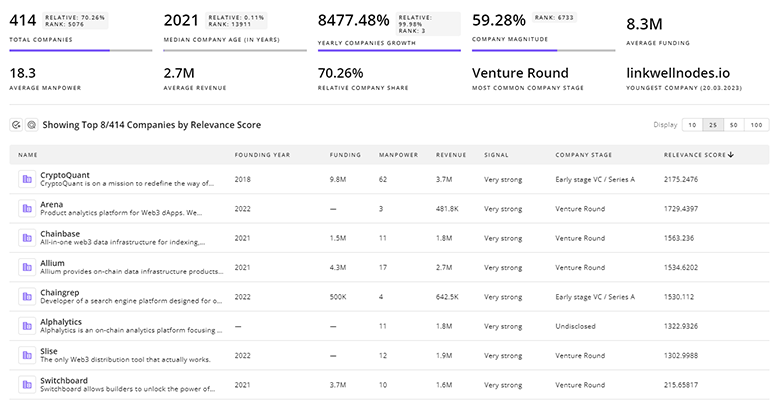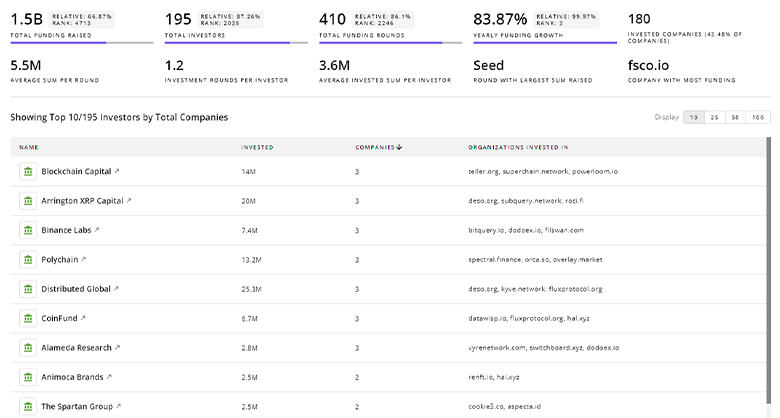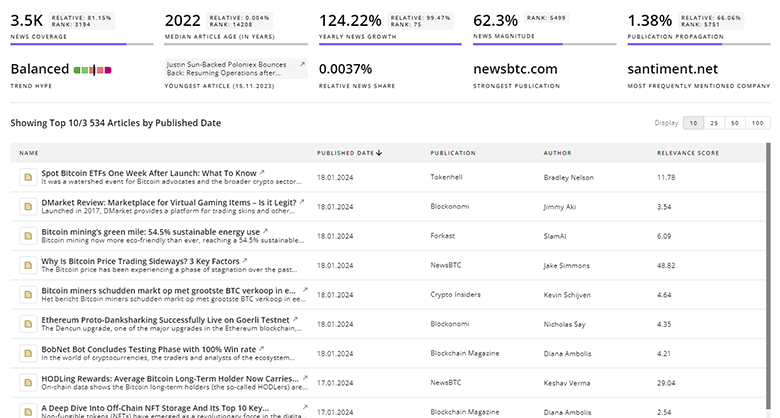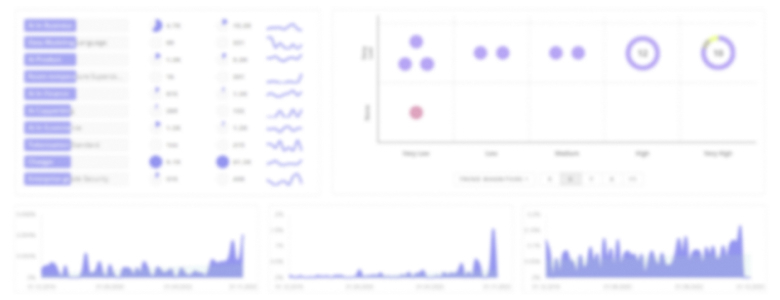
Large Language Models Report
: Analysis on the Market, Trends, and TechnologiesThe global large language model market is set for a steep upward trajectory, with key internal trends showing a remarkable increase in digital discourse—news coverage in this field has surged by over 8,196.56% in the past five years. This report synthesises recent financial data, key operational activities, and emerging industry innovations to deliver actionable insights. It outlines the strategic application areas that span natural language understanding, automated customer interaction, content generation, and enterprise automation, and it offers a forward-looking analysis tied to market forecasts reported by multiple market-research sources (Precedence Research).
Our latest update of this report was 150 days ago. If you found a mistake or missing information, tell us!
Topic Dominance Index of Large Language Models
The Topic Dominance Index evaluates Large Language Models's significance by analyzing data on the distribution of news articles that mention Large Language Models, the timeline of newly founded companies working in this sector, and global search trends
Key Activities and Applications
- Natural Language Processing and Generation: LLMs are widely used to interpret, generate, and manipulate human language, supporting tasks such as content creation for marketing and customer support.
- Conversational AI Systems: These systems power chatbots and virtual assistants, enhancing customer interactions by reducing response times and improving conversation quality (Straits Research).
- Enterprise Automation: LLM-based solutions are increasingly integrated in supply-chain management, automated reporting, and decision-making processes, thereby improving operational efficiencies.
- Data Analysis and Insights: By processing vast datasets, LLMs support advanced data analytics, enabling businesses to derive actionable insights and improve competitive positioning.
Emergent Trends and Core Insights
- Accelerated Market Growth: Recent studies forecast significant market expansion, with projections indicating growth from several billion dollars in 2024 to over $80 billion by the mid-2030s.
- Shift in Regional Dominance: North America currently leads in market share, while Asia-Pacific is poised for the fastest growth, reflecting shifts in digital-infrastructure investment.
- Increased Collaboration and Open Access: There is a growing emphasis on making LLM platforms accessible for research and development, as evidenced by initiatives from major players to open-source parts of their models (InfoWorld).
- Focus on Ethical and Responsible AI: Companies are increasingly investing in measures to improve LLM explainability, limit bias, and ensure responsible usage, a response to regulatory pressures and societal expectations.
Technologies and Methodologies
- Transformer Architectures: The core design of LLMs employs transformer models, which capture context over extended sequences of text with high accuracy (Polaris Market Research).
- Deep Learning and Neural-Network Optimisation: Techniques such as singular-value decomposition and reinforcement learning are being innovated to improve training efficiency and model performance.
- Data Fusion and Multimodal Integration: New training methods combine textual, visual, and auditory data, enhancing the versatility of LLMs across various applications.
- Cloud and Edge-Computing Infrastructure: Scalable deployment models that blend cloud-based processing with edge computing ensure low-latency inference and efficient model updates.
Large Language Models Funding
A total of 1.2K Large Language Models companies have received funding.
Overall, Large Language Models companies have raised $63.3B.
Companies within the Large Language Models domain have secured capital from 4.2K funding rounds.
The chart shows the funding trendline of Large Language Models companies over the last 5 years
Large Language Models Companies
DeepSeek AI: Founded in 2023, DeepSeek AI from China focuses on developing general artificial-intelligence models, including a 236-billion-parameter model. Their suite includes specialised versions for diverse applications such as natural-language processing and code generation, and they have positioned themselves as innovators utilising self-built training frameworks and compute clusters. Their open-source approach and rapid development cycle make them a notable player in the LLM ecosystem.
Sense Street: A boutique company developing natural-language-understanding systems specifically for capital markets. By leveraging exclusive datasets from global financial institutions, Sense Street creates fine-tuned LLMs that extract structured information from unstructured market dialogue. Their technology drives improved analytics and decision-making within financial enterprises.
Malted AI: Malted AI specialises in distilling enterprise-specific small language models that achieve high precision while reducing operating costs. Their approach customises off-the-shelf LLM capabilities to address niche business tasks, offering significant cost savings and improved performance. Their focus on domain-specific model distillation addresses a key gap in current general-purpose AI systems.
Latimer: This startup focuses on training large language models with diverse historical and cultural datasets to generate inclusive and context-aware outputs. With a small team and a highly targeted approach, Latimer’s models are designed to resonate authentically with under-represented groups by embedding cultural voices into the model’s training data. Such an approach provides new dimensions of personalisation in digital communication.
Adaptive ML: Adaptive ML offers a cloud-based platform for fine-tuning and adapting LLMs with real-time feedback. Their technology allows enterprises to continuously update and refine AI models through reinforcement learning, ensuring that the deployed models remain aligned with evolving operational demands and user interactions. This focus on dynamic model adjustment positions them uniquely in the competitive landscape.
Explore comprehensive profiles of 4.1K companies shaping the future of Large Language Models with TrendFeedr's Companies feature.

4.1K Large Language Models Companies
Discover Large Language Models Companies, their Funding, Manpower, Revenues, Stages, and much more
Large Language Models Investors
TrendFeedr’s Investors tool allows you to explore detailed investment activities and trends based on 5.3K Large Language Models investors. This tool provides an in-depth analysis of funding rounds and market dynamics to make informed investment decisions.

5.3K Large Language Models Investors
Discover Large Language Models Investors, Funding Rounds, Invested Amounts, and Funding Growth
Large Language Models News
Stay updated with TrendFeedr’s News feature, which offers you access to 39.0K Large Language Models articles. This tool provides you with a comprehensive understanding of the historical and current trends shaping the market.

39.0K Large Language Models News Articles
Discover Latest Large Language Models Articles, News Magnitude, Publication Propagation, Yearly Growth, and Strongest Publications
Executive Summary
Large language models are rapidly reshaping digital interactions, with significant financial incentives and operational efficiencies emerging across industries. Data transparency, improved processing architectures, and expanded deployment options are driving market growth and regional shifts. Companies that combine innovation with responsible practices are poised to excel in this dynamic environment, paving the way for enhanced enterprise automation and personalised user engagement.
We’re keen to partner with subject matter experts to enrich our coverage. Think you can help? Let us know.













